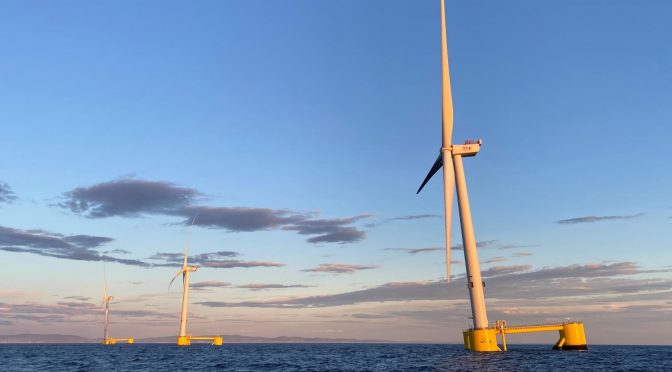The Biden administration on Wednesday outlined plans to expand offshore wind energy development across almost all U.S. coasts, raising the prospect that wind turbines could be installed from the Carolinas to California.
“We have big goals to achieve a clean energy economy,” Interior Secretary Deb Haaland said during a speech at American Clean Power’s Offshore WINDPOWER Conference in Boston on Wednesday. Haaland called the administration’s plan a road map to show “exactly where we’re headed and how we plan to achieve a clean energy future by 2030.”
The government will consider selling development rights in waters along the Carolinas, California, Oregon and New York, as well as the central Atlantic and the gulfs of Maine and Mexico, potentially leaving just the U.S. Arctic coast untouched by turbines. All told, the Interior Department envisions as many as seven offshore wind lease sales by 2025.
Most of the wind leasing plans described Wednesday have previously been proposed or telegraphed, including an effort to get the first-ever wind farms floating off the California coast. But with her remarks, Haaland offered the clearest vision yet of what a new surge in offshore wind development could look like.
Two small wind farms operate in waters off the U.S. East Coast today, but the country is still trying to catch up with China, Germany, the U.K. and other countries in generating power from the strong, steady gusts at sea.
The administration’s offshore wind plans could create “tens of thousands of highly skilled jobs, revitalize coastal communities and deliver vast amounts of reliable clean energy,” American Clean Power Association Chief Executive Heather Zichal said in a statement.
The plans could also help satisfy President Joe Biden’s goal of deploying 30 gigawatts of offshore wind energy by the end of the decade.
Interior’s Bureau of Ocean Energy Management is already scrutinizing plans for nine offshore wind projects in leased areas along the East Coast, with pending proposals representing as much as 19 gigawatts of potential renewable power. And the agency is working to identify new areas of the U.S. outer continental shelf for leasing—a move that responds to the clamor by renewable developers for more territory as well as their desire for a predictable outline of what tracts could become available.
“We are working to facilitate a pipeline of projects that will establish confidence for the offshore wind industry,” Bureau Director Amanda Lefton said in a statement. “At the same time, we want to reduce potential conflicts as much as we can.”
The issue is critical. Some environmentalists and fishing interests have raised concerns with the administration’s plans and the pace of offshore wind development. And successful litigation over project approvals could chill investment plans. The Responsible Offshore Development Alliance has already challenged the Biden administration’s approval of the $2.8 billion Vineyard Wind LLC project, the first major commercial-scale wind farm to be permitted in federal waters.
National Ocean Industries Association President Erik Milito said the additional clarity will aid developers. “Providing a reliable and predictable road map of offshore wind opportunities will help boost critical investments into the supply chain, ports and workers,” he said by email.
The Interior Department separately said it is weighing new restrictions and reporting requirements on wind developers, including changes that could encourage the use of organized labor and American-made materials. The ocean energy bureau already proposed requiring lease holders to make every reasonable effort to enter into project labor agreements covering projects in a shallow stretch of the Atlantic Ocean between New York’s Long Island and New Jersey.


